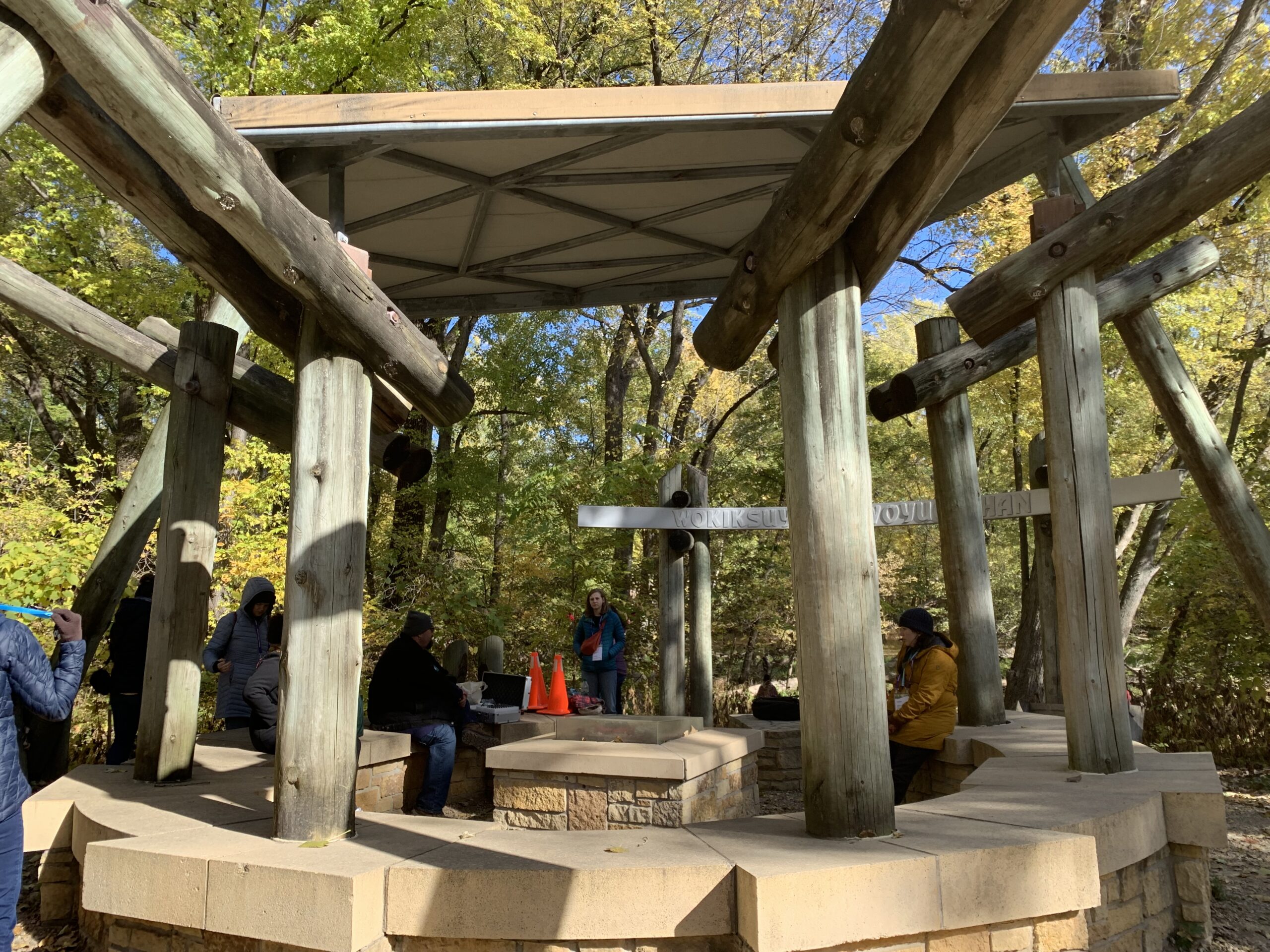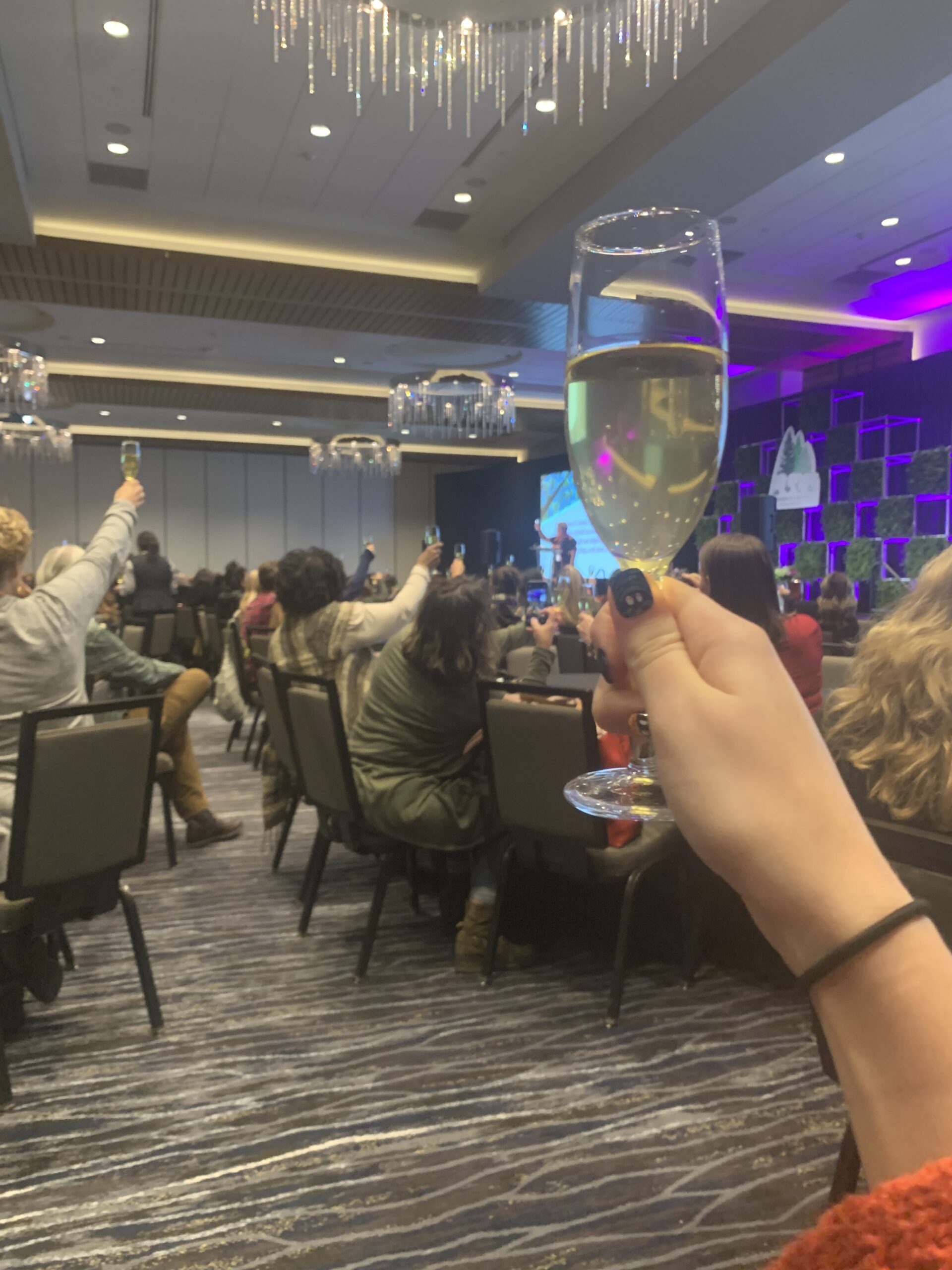By Lauren Bissonette
This past October 17, I woke up bright and early to fly to Minnesota. Why was I going there? I’d been before to visit my spouse’s family, but I think the state’s renowned natural splendor and warm Midwest demeanor would attract anyone. However, I was going there for the inaugural Women’s Forest Congress.
As the Forest History Society’s librarian, I first learned of the WFC in early 2021, when FHS approached congress organizers to offer our expertise and provide historical background on past forest congresses. FHS wanted to assist with ensuring that the story of this congress would be preserved. By attending I would be both a witness to and a participant in making history.
Speaking of history, you should know this was the Eight American Forest Congress. It took until the Fourth American Forest Congress, held in in 1953, before women (two, to be exact) were on the program. That was also the first time that women had been invited as delegates.1
So imagine this: I get to the hotel where the congress is being held and go to my room to prepare for a pre-congress field tour. Then I head back down to the lobby. As soon as the elevator doors open, I hear a symphony of women’s voices and I know this is where I am supposed to be. I mean that not just literally, but spiritually. I let my guard drop, knowing I am in a safe space and I belong here.
THERE IS POWER IN A SPECIFIC PLACE
Sponsored by the Minnesota Women’s Woodland Network, the Native American Culture Sites tour took us to Bdote, a sacred site located on an island at the confluence of the Mississippi and Minnesota rivers. Bdote has been honored for centuries by the Dakota people as a place of creation. Our guide, the powerful orator Jim Bear Jacobs, told us that as American colonizers moved in, it eventually turned into a site of mass imprisonment and death for indigenous people. Again and again during the nineteenth century, the Dakota people were pushed from their homes until they occupied only a small strip of land on the Minnesota River. The money promised to them for ceding their land was instead claimed by and distributed to white traders. Negligence and wanton corruption by the US government pushed the Dakota people over the brink—armed conflict erupted in the summer of 1862. Though the US–Dakota War would last only six weeks, it had major consequences for the Dakota people and other Native Americans. Afterward, the Dakota people were held in a concentration camp at this location; this place of creation was now known as a place of death from disease, abuse, and genocidal actions.
Three hundred Dakota men were sentenced to death. After President Abraham Lincoln reviewed the cases, 38 men were hanged on December 26, 1862, in the largest mass execution in American history. Six days later, Lincoln issued the Emancipation Proclamation.
It’s one thing to learn about history from a book. It is another to stand in place where history has happened. It literally grounds you. There is power in a specific place and a deeper understanding through the context of a space. This story was shared with us at the Wokiksuye K′ a Woyuonihan (Remembering and Honoring) memorial at Fort Snelling State Park, a memorial that honors the 1,600 Dakota people imprisoned at the fort following the war.
With a newfound appreciation and reverence for the land, our group headed back for the welcome reception and dinner. Although I am a socially anxious person, I walked into the reception with a concerted calmness and curiosity. “What did I have to worry about?” I asked myself as I waited in line for a complimentary glass of wine that would undoubtedly ease my nerves. I was resigned to mingle with my unknown peers and flex my atrophied networking muscles. It was easier than I anticipated. As I entered the line for hors d’oeuvres, I immediately recognized a woman I’d met just a month earlier at the Society of American Foresters national convention, where we’d enjoyed a dinner together. In a crowd of strangers, I was elated to see her again here. Later on, I was pulled away by another friendly face. Rachel Kline, a historian with the US Forest Service and liaison to the FHS board of directors, introduced me to some of her colleagues and we all went into the hotel ballroom for the reception and dinner. Rachel gave an inspiring keynote talk on women’s legacy in forestry and conservation.
INTENTIONAL WELLNESS
Though I’m early in my professional career and have attended some academic conferences, I had never been to a professional gathering like this, where wellness was at the forefront of the organizers’ minds. Before each day’s events, you could attend a yoga or Zumba session. Between or during sessions we had “brain breaks,” where we could get up and move around, dance, stretch, and meditate. There were dedicated spaces for nursing mothers, a wellness lounge for decompressing, and a creativity space to tap into your energy and express yourself artistically. Mental health was a priority, especially given the demands of the outside world and women’s common role as caregivers by default. It was refreshing to have a space where we could simply be.
These practices are important for all and should be employed at conferences and even workplaces alike. The WFC organization seeks to advocate for workplace support systems that uphold mental health coverage, flexible work schedules, family leave, and wellness programs. Visiting forests is a proven form of therapy—forests provide a space for healing—and those who are lucky enough to work in forestry get that added benefit. But intentional employee wellness practices benefit forestry and other workplaces because of increased worker retention, productivity, and creativity.
One of my favorite sessions was “Communicating through Conflict and Bountiful Boundaries.” This session offered tools and techniques to handle heated situations and interpersonal conflict both in the workplace and at home. Once seating had completely filled up, women stood along the walls and sat on the floor. It was no surprise to me that this was a popular class—women are socialized to be people pleasers, and others often step all over their boundaries. (I myself avoid conflict whenever possible and find it difficult to create and maintain boundaries.) Over the next hour and a half, we learned how to begin difficult conversations with honesty and respect and how to respond with authenticity and curiosity. Attendees shared their own experiences and struggles, and we walked away with empowerment and support.
NOT JUST A SPACE FOR WOMEN
The WFC was not just a space for women. The congress sought to be equitable and inclusive, welcoming individuals of all ages, colors, and genders—this includes trans, nonbinary, and gender-nonconforming folks. I am a queer person and nonbinary in nature (pun intended); to feel more comfortable in a new space, I tend to seek out others like myself. Statistically, I knew others had to be here.
As the librarian at FHS, I’ve searched high and low for references to queer individuals in forest and conservation history. Unsurprisingly, there’s not much out there—historically, it has been dangerous to be an out and proud queer person. Take, for example, Rachel Carson. When she published Silent Spring in 1962, Carson faced withering personal attacks, and her opponents tried to censor her book. But perhaps the biggest censor was Carson herself—and for good reason. Surviving letters between Carson and Dorothy Freeman, her neighbor in Maine who was married, reveal their deep and intimate lesbian relationship.2 They had an agreement to destroy the letters to avoid scandal and to protect Carson’s legacy.3 Her Silent Spring changed the world. But to me, Carson’s legacy is even greater because of her queerness—that she perhaps hid her own nature and truth in order to expose other truths about nature. I wondered, what would Rachel have thought about this gathering?
By the second day of the congress, there were lively discussions on the conference app, and I was surprised that none surrounded the LGBTQIA2S+ community.4 So I started one. With a quick introduction of myself and a prompt to get a discussion going, others started following the thread almost immediately. They, too, had been looking for the opportunity to connect with other members of the community! It was because of this online discussion thread that I learned of other resources and meetups for queer folks in forestry, such as the Forest Steward Guild’s “Seeing the Forest for the Queers,” a monthly online discussion group for people who identify with the LGBTQIA2S+ community in the natural resources field. I felt proud to have facilitated a channel that connected us.
BUILDING A TABLE FOR ALL
Historically, as one of the speakers noted, women have found themselves not at the table but on the menu: those at the table have denied women representation or the chance to participate and were making decisions about and for us. However, at this congress, women were not only given a seat at that table, but they built the table and chairs from wood they’ve grown, harvested, and milled—and they invited all to join with them. And I was there. One hundred and forty years after the first forest congress, where nary a lady was to be seen, I was in a room with five hundred women who resolved to foster workforce opportunities for all women, create systems of support that prioritize mental, emotional, physical, and spiritual health, and intentionally identify and boost women and those from underrepresented groups to achieve leadership positions. This was history in the making, and I wasn’t sitting in my librarian’s office reading about it. I and my peers were making history. I was in that space and it was powerful.
Lauren Bissonette is Librarian of the Forest History Society. They serve as Publicity and Outreach Chair for the American Library Association Sustainability Roundtable.
Originally posted in January 2023 on the Forest History Society Blog.
NOTES
- 1. Arthur V. Smyth, A Brief History of the American Forest Congresses (Seventh American Forest Congress,1994), 8.
- 2. Carolyn Gage, “Review of Rachel Carson: Witness for Nature,” May 27, 2021, https://carolyngage.weebly.com/blog/review-of-rachel-carson-witness-for-nature. In this review of Linda Lear’s 1999 biography of Carson, Gage quotes from the surviving correspondence between the two that was edited by Martha Freeman, Dorothy’s granddaughter, and published in Always, Rachel: The Letters of Rachel Carson and Dorothy Freeman, 1952–1964 (Boston: Beacon Press, 1995). Gage also discusses the pivotal relationships Carson had with two other women before she met Freeman.
- 3. Jill Lepore, “The Right Way to Remember Rachel Carson,” The New Yorker, March 19, 2018, https://www.newyorker.com/magazine/2018/03/26/the-right-way-to-remember-rachel-carson.
- 4. The term “LGBTQIA2S+” stands for Lesbian, Gay, Bisexual, Transgender, Queer/Questioning, Asexual, Two-Spirit, and other identifiers. For more information about these labels, see “GLAAD Media Reference Guide – LGBTQ Terms,” GLAAD, March 15, 2022, https://www.glaad.org/reference/terms.

